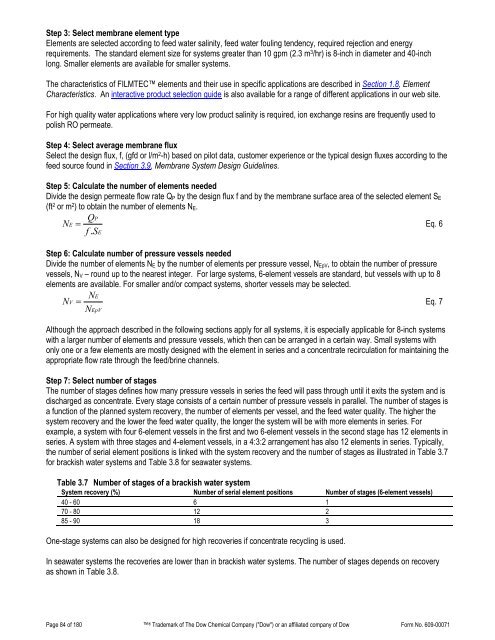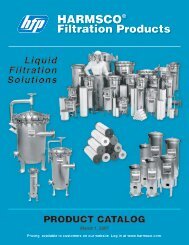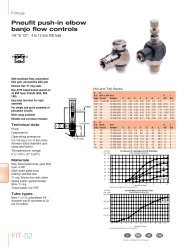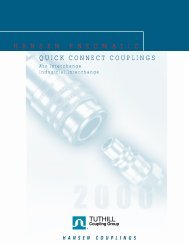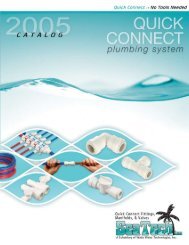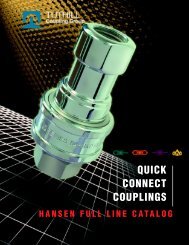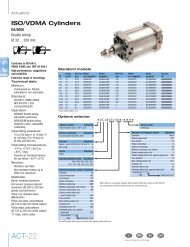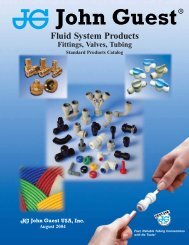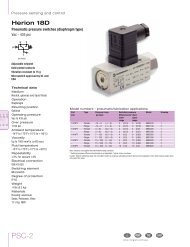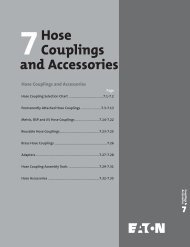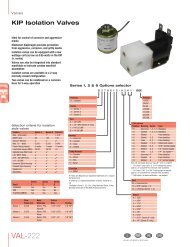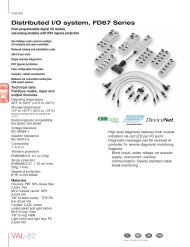FilmTec Technical Manual - Chester Paul Company
FilmTec Technical Manual - Chester Paul Company
FilmTec Technical Manual - Chester Paul Company
Create successful ePaper yourself
Turn your PDF publications into a flip-book with our unique Google optimized e-Paper software.
Step 3: Select membrane element typeElements are selected according to feed water salinity, feed water fouling tendency, required rejection and energyrequirements. The standard element size for systems greater than 10 gpm (2.3 m 3 /hr) is 8-inch in diameter and 40-inchlong. Smaller elements are available for smaller systems.The characteristics of FILMTEC elements and their use in specific applications are described in Section 1.8, ElementCharacteristics. An interactive product selection guide is also available for a range of different applications in our web site.For high quality water applications where very low product salinity is required, ion exchange resins are frequently used topolish RO permeate.Step 4: Select average membrane fluxSelect the design flux, f, (gfd or l/m 2 -h) based on pilot data, customer experience or the typical design fluxes according to thefeed source found in Section 3.9, Membrane System Design Guidelines.Step 5: Calculate the number of elements neededDivide the design permeate flow rate Q P by the design flux f and by the membrane surface area of the selected element S E(ft 2 or m 2 ) to obtain the number of elements N E .QPNE= Eq. 6f SE.Step 6: Calculate number of pressure vessels neededDivide the number of elements N E by the number of elements per pressure vessel, N EpV , to obtain the number of pressurevessels, N V – round up to the nearest integer. For large systems, 6-element vessels are standard, but vessels with up to 8elements are available. For smaller and/or compact systems, shorter vessels may be selected.NEN V = Eq. 7NEpVAlthough the approach described in the following sections apply for all systems, it is especially applicable for 8-inch systemswith a larger number of elements and pressure vessels, which then can be arranged in a certain way. Small systems withonly one or a few elements are mostly designed with the element in series and a concentrate recirculation for maintaining theappropriate flow rate through the feed/brine channels.Step 7: Select number of stagesThe number of stages defines how many pressure vessels in series the feed will pass through until it exits the system and isdischarged as concentrate. Every stage consists of a certain number of pressure vessels in parallel. The number of stages isa function of the planned system recovery, the number of elements per vessel, and the feed water quality. The higher thesystem recovery and the lower the feed water quality, the longer the system will be with more elements in series. Forexample, a system with four 6-element vessels in the first and two 6-element vessels in the second stage has 12 elements inseries. A system with three stages and 4-element vessels, in a 4:3:2 arrangement has also 12 elements in series. Typically,the number of serial element positions is linked with the system recovery and the number of stages as illustrated in Table 3.7for brackish water systems and Table 3.8 for seawater systems.Table 3.7 Number of stages of a brackish water systemSystem recovery (%) Number of serial element positions Number of stages (6-element vessels)40 - 60 6 170 - 80 12 285 - 90 18 3One-stage systems can also be designed for high recoveries if concentrate recycling is used.In seawater systems the recoveries are lower than in brackish water systems. The number of stages depends on recoveryas shown in Table 3.8.Page 84 of 180 ® Trademark of The Dow Chemical <strong>Company</strong> ("Dow") or an affiliated company of Dow Form No. 609-00071


